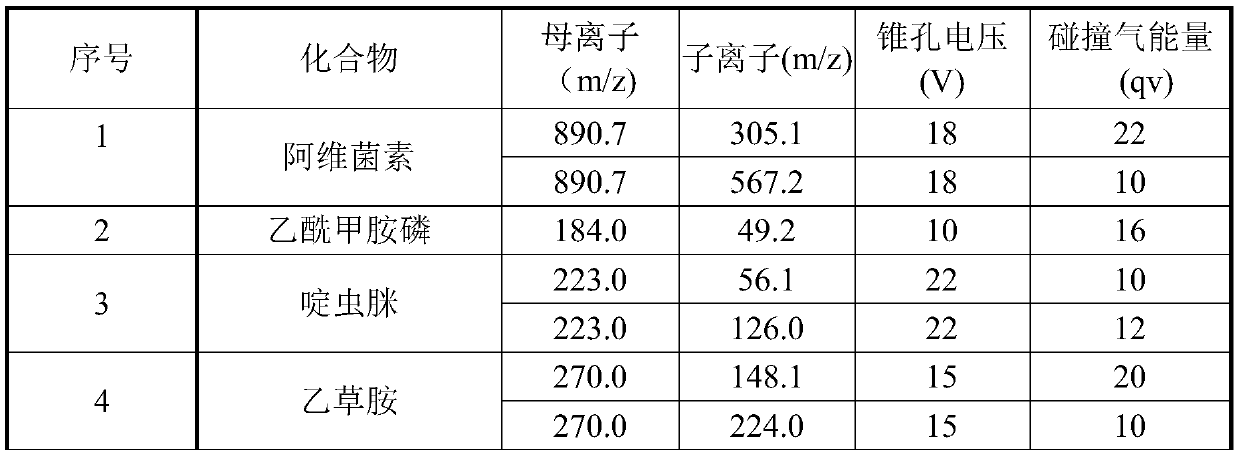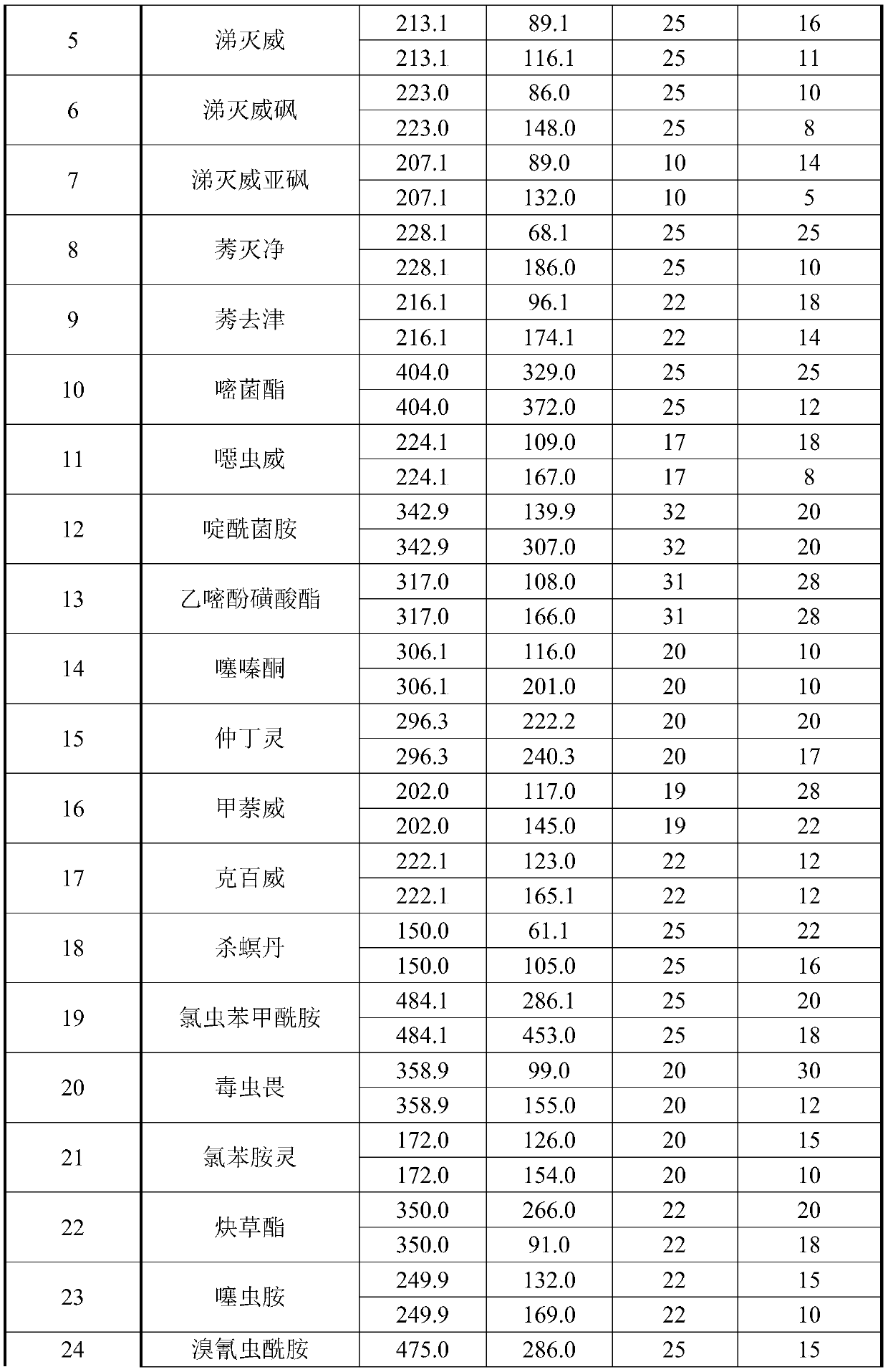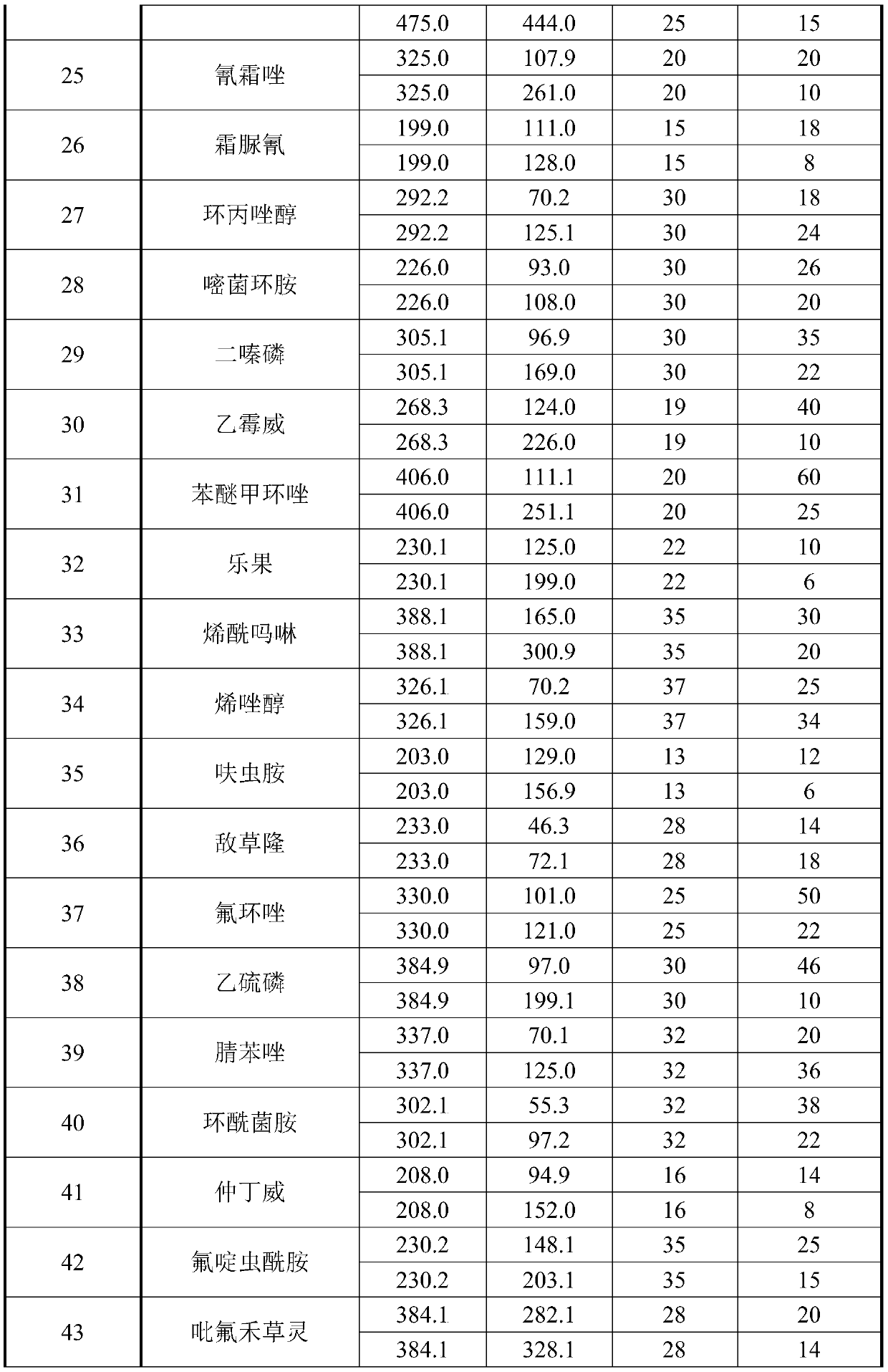A method for determining 101 kinds of pesticide residues in Lycium barbarum
A technology for pesticide residues and wolfberry, which is applied in the field of analytical chemistry, can solve problems such as the decrease in the accuracy of detection results, the loss of pesticide residues to be tested, and the complicated processing steps, so as to achieve accurate and reliable results, promote import and export trade, repeatability and accuracy. good effect
- Summary
- Abstract
- Description
- Claims
- Application Information
AI Technical Summary
Problems solved by technology
Method used
Image
Examples
Embodiment 1
[0069] Preparation: Lycium barbarum samples were pulverized evenly, and stored at low temperature and protected from light.
[0070] Extraction: Weigh 5g of wolfberry powder (accurate to 0.01g) into a 50mL centrifuge tube with a cover, add 10mL of water to fully infiltrate, let stand for 10min, add 15mL of acetonitrile extract, vortex for 1min, add AOAC 2007.01 extraction salt bag, vigorously Shake for 1 min, and centrifuge for 5 min at a standard speed of 5000 r / min.
[0071] Purification: Take the Sin-QuEChERS Nano purification tube, insert it into the centrifuge tube containing the extraction solution, press down slowly, so that about 4mL of the purification solution enters the reservoir, absorb the supernatant and filter it through a 0.22μm organic phase filter membrane and wait for LC-MS / MS analysis.
PUM
 Login to View More
Login to View More Abstract
Description
Claims
Application Information
 Login to View More
Login to View More - R&D
- Intellectual Property
- Life Sciences
- Materials
- Tech Scout
- Unparalleled Data Quality
- Higher Quality Content
- 60% Fewer Hallucinations
Browse by: Latest US Patents, China's latest patents, Technical Efficacy Thesaurus, Application Domain, Technology Topic, Popular Technical Reports.
© 2025 PatSnap. All rights reserved.Legal|Privacy policy|Modern Slavery Act Transparency Statement|Sitemap|About US| Contact US: help@patsnap.com



